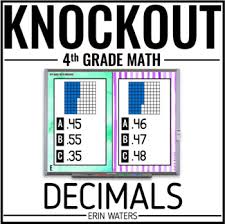
The federal SEOG grants financial aid to college students in greatest financial need. You must be in financial need and committed to getting a degree in your chosen field. These guidelines are quite simple. Below is an overview of the application process, eligibility requirements, and limitations. Make sure to read the entire article before applying. Once you have read the entire article, you will be closer to getting your first grant.
Application process
An SEOG grant is a type of scholarship for a student to cover college costs. The federal government approves grants for students if you are either a U.S. citizen, or a citizen of another nation. To be eligible for a grant, you must have a Social Security number and be registered with Selective Service if you are a male. You must also be enrolled full or part-time at an accredited university and possess a valid GED Certificate. You can apply for the SEOG program if you are a student at an accredited college.
The FSEOG opportunity grant is awarded based on individual financial need, and can provide an additional $100 to $4,000 for each year of study. Each year's award amount is subject to change so be sure to read through the guidelines before applying. In order to receive a larger award amount, you must notify the school of any changes in your financial situation. If your parents' income is higher than yours, your FAFSA must reflect this.

Requirements for eligibility
Federal Student Aid Office, (FSEOG), has specific requirements for FSEOG. First, you must not be a U.S. citizen. Second, you must hold a Bachelor's Degree or higher. A minimum GPA requirement is that you have 2.0 GPA. FSEOG will not be available to students who are in default on student loans. If you have been awarded a Pell Grant, however, you might be eligible.
The eligibility requirements for FSEOG grants are strict, just like any grant. Those who have defaulted on federal or guaranteed student loans may be disqualified. The school may still consider your application if you have a reason to. It might request a written waiver from the U.S. Department of Education. This document serves as proof of your financial needs.
Available to Pell-eligible students
Postsecondary education increases student employability and productivity. Pell for Success helps institutions make it easier for low-income student to pursue higher-paying jobs. Pell grants, for example, can increase the number of students from low-income backgrounds studying STEM fields, establish career centers, and build alumni networks. These grants offer schools an opportunity to enhance the quality of education as well as prepare students for jobs. Some schools will offer vocational programs or work with local businesses to customize instruction for their students.
The federal government guarantees participating institutions will receive funds for the payment of Federal Pell Grants. However, there are limits to these funds and students must be awarded based on their need. Pell Grants can be prorated depending on the number of credits that a student enrolls during the award year. The student's ability to pay the school's tuition and their enrollment status are important factors that determine the amount of money they can receive.

Limitations
While a student can receive up to $4,400 from an FSEOG grant, there are limits to the amount that an institution may award. An award cannot be more than 75 percent federal. Students may request a greater Federal share if they're enrolled in a study-abroad program. This request must also be made during regular FSEOG funding requests. Students who apply through a foundation, charity or other organization may also be eligible for an increased Federal share.
FAQ
Who can homeschool?
Anyone can homeschool. No special qualifications are required.
Parents who have completed high school can teach their children. In fact, many families choose to teach their older children while they attend college.
Parents who have received less formal education can still teach their children.
After meeting certain requirements parents can become teacher certified. These requirements vary by state.
Some states require that all homeschooled students pass a test before they graduate. Others do not.
Parents who wish to homeschool must register their family with the local school district.
This involves filling out paperwork that is then submitted to the school board.
After registering, parents will be able to enroll their child in either public or privately-funded schools.
Some states allow parents to homeschool, but they must register their children with the government.
If you live within one of these states, it is your responsibility to ensure that your children fulfill the state's mandatory attendance law.
What's the point of education or schooling?
Education should prepare students for work. It is not only an academic pursuit, but also a social activity in which children can learn from each other and gain confidence through participating in sports, music, or art. Education is about teaching students to think critically and create in order to be independent and self-reliant. What does it really mean to have high educational standards
Educational standards that promote student success are considered good. They establish clear goals for teachers to work towards with their students. Schools can adapt to changing educational needs if they have good educational standards. In addition, they must be fair and equitable: every child has the same chance of success regardless of his/her background.
What are the alternatives to school?
An alternative school is designed to give students with learning problems access to education, by supporting them with qualified teachers who understand their unique needs.
An alternative school provides children with special educational needs the opportunity to learn in a regular classroom setting.
Additional support is available if needed.
An alternative school isn't only for those who have been expelled from mainstream schools.
They are open for all children, regardless their ability or disability.
What is the distinction between public and private schools, you ask?
All students can attend the public school for no cost. They offer education for kindergarten through high school. Private schools charge tuition fees for each student. They offer education from preschool until college.
Charter schools are public-funded but privately managed. Charter schools don’t follow traditional curriculum. They give students more freedom and allow them to pursue their interests.
Charter schools are very popular with parents who believe that all children should have equal access to education, regardless of their financial circumstances.
Statistics
- Among STEM majors, that number is 83.5 percent. (bostonreview.net)
- And, within ten years of graduation, 44.1 percent of 1993 humanities graduates had written to public officials, compared to 30.1 percent of STEM majors. (bostonreview.net)
- These institutions can vary according to different contexts.[83] (en.wikipedia.org)
- Think of the rhetorical power of nineteenth-century abolitionist Harriet Beecher Stowe, Martin Luther King, Jr., or Occupy Wall Street activists with their rallying cry of “we are the 99 percent.” (bostonreview.net)
- Globally, in 2008, around 89% of children aged six to twelve were enrolled in primary education, and this proportion was rising. (en.wikipedia.org)
External Links
How To
How to enroll in homeschooling
Homeschooling involves the teaching of subjects to children through a variety of methods including reading books, watching videos, exercising, and listening to music. It is considered one of the most effective ways of learning because it enables students to learn things at their own pace and develop skills like problem-solving, critical thinking, creativity, self-discipline, communication, and social skills.
Many people want their children to be educated at home. This is especially true for working parents. Homeschooling is an option that allows parents to focus their efforts on their children's education and not have to worry about how to find someone to care for them.
Homeschooling has many benefits. They can develop their ability to think critically and create, increase their knowledge, improve their language skills, develop their identity, become independent learners and have greater control over their lives than if they were in school.
Homeschooling is designed to give quality education to students so that they can succeed as adults. Before you begin homeschooling, you will need to meet some requirements. This includes determining whether your child qualifies to attend private or public schools. If you decide to start homeschooling, you should consider what kind of curriculum you will use. You have many options when it comes to curricula online. These can be customized to suit your needs, budget and level of expertise. Some of these include classical, Montessori, Waldorf, Reggio Emilia, Charlotte Mason, unschooling, natural learning, and others. It is also important to have the resources you will need to teach your child. This includes buying textbooks, educational materials and computers. These items are available online and in your local store.
Once you have completed all the steps mentioned above, the next step would be to register yourself as a homeschooling parent. To do this, contact your state department or education for assistance. They will assist you with filling out forms and provide guidance on how to get started homeschooling.